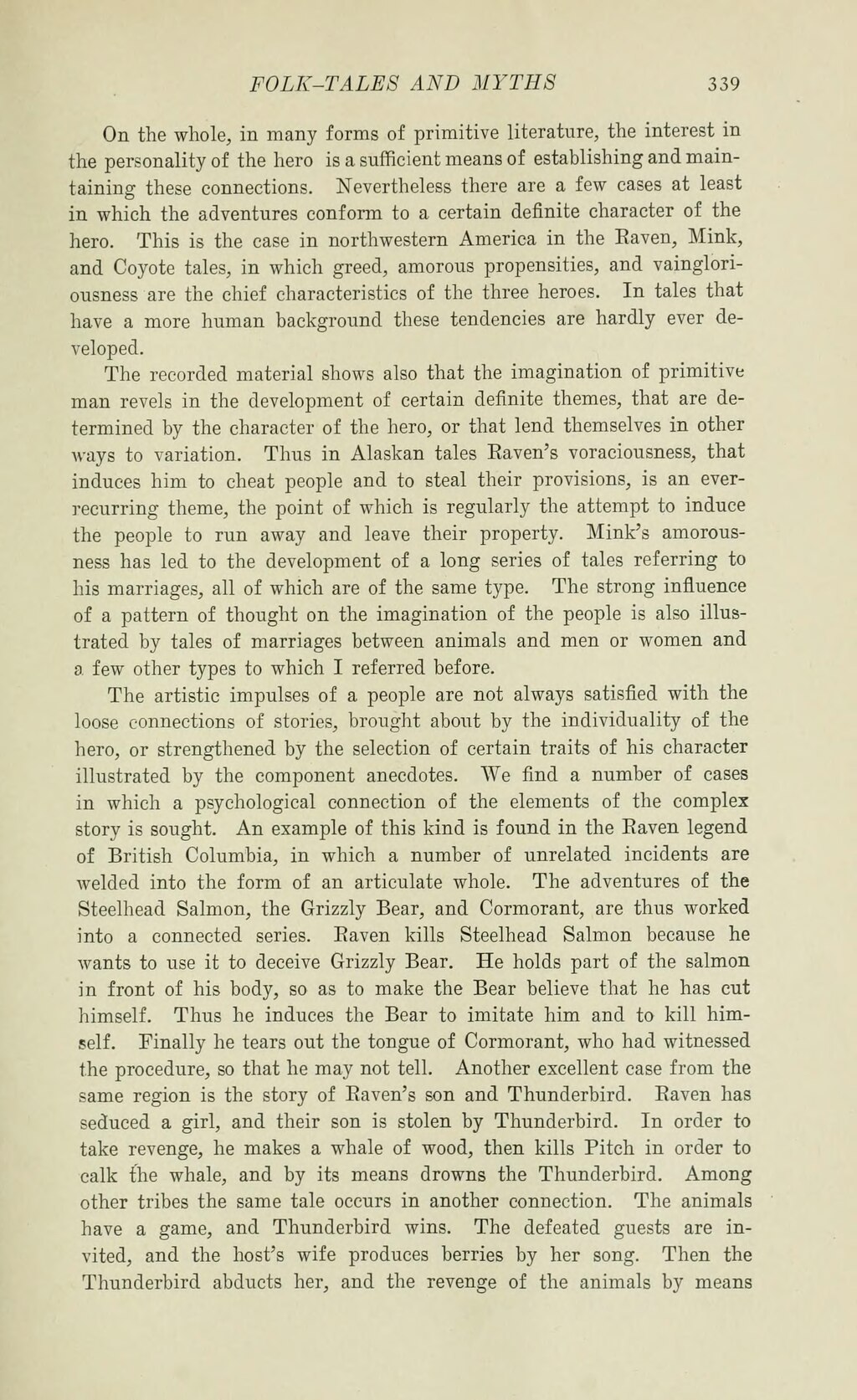On the whole, in many forms of primitive literature, the interest in the personality of the hero is a suffient means of establishing and maintaining these connections. Nevertheless there are a few cases at least in which the adventures conform to a certain definite character of the hero. This is the case in northwestern America in the Raven, Mink, and Coyote tales, in which greed, amorous propensities, and vaingloriousness are the chief characteristics of the three heroes. In tales that have a more human background these tendencies are hardly ever developed.
The recorded material shows also that the imagination of primitive man revels in the development of certain definite themes, that are determined by the character of the hero, or that lend themselves in other ways to variation. Thus in Alaskan tales Raven’s voraciousness, that induces him to cheat people and to steal their provisions, is an ever-recurring theme, the point of which is regularly the attempt to induce the people to run away and leave their property. Mink’s amorousness has led to the development of a long series of tales referring to his marriages, all of which are of the same type. The strong influence of a pattern of thought on the imagination of the people is also illustrated by tales of marriages between animals and men or women and a few other types to which I referred before.
The artistic impulses of a people are not always satisfied with the loose connections of stories, brought about by the individuality of the hero, or strengthened by the selection of certain traits of his character illustrated by the component anecdotes. We find a number of cases in which a psychological connection of the elements of the complex story is sought. An example of this kind is found in the Raven legend of British Columbia, in which a number of unrelated incidents are welded into the form of an articulate whole. The adventures of the Steelhead Salmon, the Grizzly Bear, and Cormorant, are thus worked into a connected series. Raven kills Steelhead Salmon because he wants to use it to deceive Grizzly Bear. He holds part of the salmon in front of his body, so as to make the Bear believe that he has cut himself. Thus he induces the Bear to imitate him and to kill himself. Finally he tears out the tongue of Cormorant, who had witnessed the procedure, so that he may not tell. Another excellent case from the same region is the story of Raven’s son and Thunderbird. Raven has seduced a girl, and their son is stolen by Thunderbird. In order to take revenge, he makes a whale of wood, then kills Pitch in order to calk the whale, and by its means drowns the Thunderbird. Among other tribes the same tale occurs in another connection. The animals have a game, and Thunderbird wins. The defeated guests are invited, and the host’s wife produces berries by her song. Then the Thunderbird abducts her, and the revenge of the animals by means
